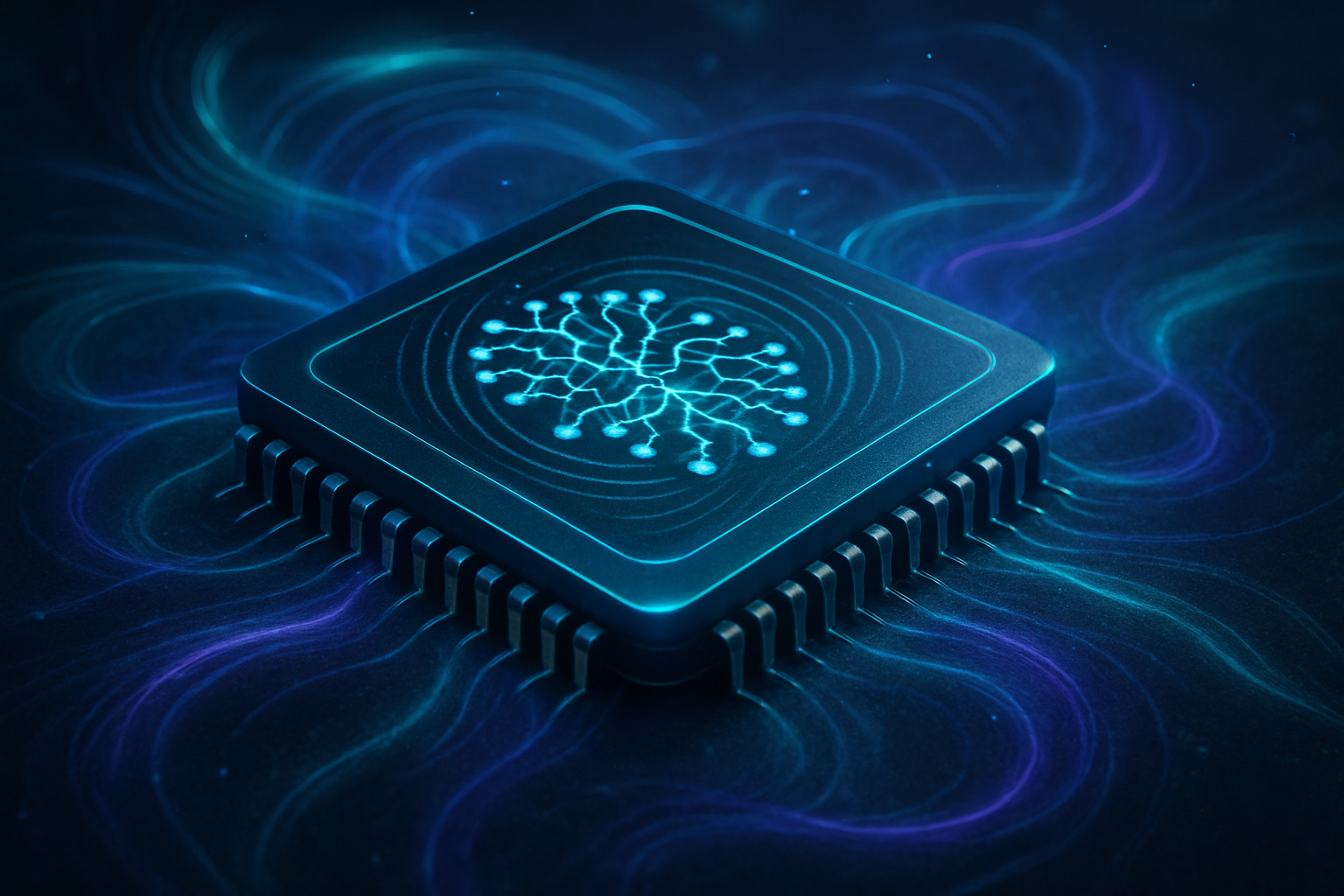The financial world is witnessing a profound shift in predictive analytics with the advent of Transformer AI models, now demonstrating superior capabilities in forecasting stock market movements. Originally lauded for their breakthroughs in natural language processing, these sophisticated architectures are proving to be game-changers in integrating and analyzing the vast, complex datasets characteristic of financial markets. This breakthrough marks a significant leap beyond traditional neural networks, such as Long Short-Term Memory (LSTM) and Convolutional Neural Networks (CNNs), promising unprecedented levels of accuracy and efficiency in identifying market trends and predicting price fluctuations.
The immediate significance of this development cannot be overstated. Financial institutions, quantitative hedge funds, and individual investors alike stand to gain from more reliable predictive models, enabling quicker, more informed decision-making. The ability of Transformers to process both historical numerical data and unstructured textual information—like news articles and social media sentiment—simultaneously and with enhanced contextual understanding, is set to redefine how market intelligence is gathered and utilized, potentially reshaping investment strategies and risk management across the global financial landscape.
Unpacking the Technical Edge: How Transformers Outperform
The core of the Transformer's superior performance in stock market prediction lies in its innovative architecture, particularly the self-attention mechanism. Unlike LSTMs, which process data sequentially, making them slow and prone to losing long-range dependencies, or CNNs, which excel at local pattern recognition but struggle with global temporal understanding, Transformers can evaluate the importance of all data points in a sequence relative to each other, regardless of their position. This parallel processing capability is a fundamental departure from previous approaches, allowing for significantly faster training times and more efficient analysis of high-frequency financial data.
Specifically, the self-attention mechanism enables Transformers to weigh the relevance of distant historical price movements, economic indicators, or even nuanced sentiment shifts in a news article, directly addressing the limitations of LSTMs in capturing long-range dependencies. This holistic view allows for a more comprehensive understanding of market dynamics. Furthermore, Transformers' inherent ability to integrate multimodal data—combining numerical time series with textual information—provides a richer context for predictions. Specialized Transformer-based models, sometimes augmented with Large Language Models (LLMs), are emerging, capable of not only making predictions but also offering natural language explanations for their forecasts, enhancing transparency and trust.
Initial reactions from the AI research community and industry experts have been overwhelmingly positive. Researchers highlight the models' adaptability and scalability, noting their potential to handle the ever-increasing volume and velocity of financial data. The ability to leverage pre-trained Transformer models, fine-tuned on financial data, further accelerates development and deployment, making this technology accessible to a broader range of financial tech innovators. The shift signifies a move towards more intelligent, context-aware AI systems that can discern subtle patterns and relationships previously undetectable by traditional models.
Reshaping the Financial Landscape: Industry Implications
The integration of Transformer AI models into stock market prediction is poised to profoundly reshape the financial industry, creating new competitive battlegrounds and disrupting long-standing services. Companies at the forefront of AI research, alongside agile fintech innovators and established financial giants, are all vying for position in this evolving landscape.
Major AI labs and tech giants like Google (NASDAQ: GOOGL), the original architects of the Transformer, are well-positioned to benefit. Their platforms, such as Google Cloud's Vertex AI and the emerging Gemini Alpha, provide the foundational infrastructure and advanced AI models necessary for financial firms to build and deploy sophisticated predictive engines. Similarly, hardware providers like NVIDIA (NASDAQ: NVDA) will see increased demand for their powerful GPUs, essential for training these computationally intensive models. Fintech innovators and AI-focused startups, including those specializing in AI for finance like Scienaptic AI and The Fin AI, are rapidly integrating these models to develop hyper-accurate forecasting tools and decision models that can outperform traditional benchmarks.
For major financial institutions such as JPMorgan Chase (NYSE: JPM), the imperative to adopt and integrate Transformer AI is clear. These incumbents possess vast amounts of proprietary data—a critical asset for training robust models—and are investing billions in AI research and development. The competitive edge will belong to those who can effectively customize Transformer models to enhance real-time market data forecasting, optimize algorithmic trading strategies, and bolster risk management. This shift threatens to disrupt traditional asset pricing models and investment research, as AI-powered systems can analyze vast volumes of unstructured data (news, social media) with unprecedented speed and depth, potentially rendering manual research less competitive. The strategic advantages lie in data superiority, domain-specific model development, a focus on explainable AI (XAI) for regulatory compliance, and the ability to process and adapt to market dynamics in real-time.
Broader Implications: A New Chapter in AI's Financial Journey
The successful application of Transformer AI models to stock market prediction is not merely an isolated technical achievement; it represents a pivotal moment in the broader AI landscape, extending the technology's profound impact beyond its natural language processing origins into the complex realm of financial analytics. This breakthrough underscores a prevailing trend in AI development: the creation of highly specialized, domain-specific models built upon versatile architectures, capable of outperforming general-purpose counterparts by leveraging fine-tuned data and expert knowledge. It positions AI as an amplifier, accelerating innovation and unlocking possibilities across various sectors, with finance being a prime beneficiary.
The wider impacts on finance are extensive, touching upon enhanced risk management through comprehensive data processing, improved fraud detection by identifying intricate patterns, and more accurate market forecasting and trading across diverse financial instruments. Moreover, Transformer-powered chatbots and virtual assistants are set to revolutionize customer service, while operational efficiency gains from analyzing unstructured financial documents will streamline back-office processes. This integration signals a move towards more intelligent, data-driven financial ecosystems, promising greater efficiency and deeper market liquidity.
However, this transformative power is accompanied by significant concerns. Regulators are wary of the potential for increased market volatility and "herding behavior" if numerous firms rely on similar AI-driven decision frameworks, potentially diminishing market diversity and amplifying systemic risks, leading to flash crashes. Ethical considerations, such as algorithmic bias embedded in training data leading to discriminatory outcomes in lending or credit scoring, are paramount. The "black box" nature of complex deep learning models also raises questions of transparency and accountability, necessitating the development of Explainable AI (XAI) techniques. Furthermore, the substantial computational resources required for these models could exacerbate the digital divide, concentrating advanced financial tools among larger institutions and potentially making markets less accessible and transparent for smaller players.
Compared to previous AI milestones, the Transformer era, beginning in 2017, marks a paradigm shift. Earlier AI efforts, from symbolic systems to early machine learning algorithms like SVMs and basic neural networks, struggled with the scale and dynamic nature of financial data, particularly in capturing long-range dependencies. While LSTMs offered improvements in time-series prediction, their sequential processing limited parallelization and efficiency. Transformers, with their self-attention mechanism, overcome these limitations by processing entire sequences simultaneously, efficiently capturing global context and integrating diverse data types—including unstructured text—a capability largely unattainable by prior models. This ability to synthesize disparate information streams with unparalleled speed and accuracy fundamentally differentiates Transformer AI, establishing it as a truly groundbreaking development in financial technology.
The Horizon: Anticipating AI's Next Moves in Finance
The trajectory of Transformer AI in financial markets points towards a future characterized by increasingly sophisticated predictive capabilities, greater automation, and novel applications, though not without significant challenges. In the near term, we can expect continued refinement of stock market prediction models, with Transformers integrating an even wider array of multimodal data—from historical prices and trading volumes to real-time news and social media sentiment—to provide a more nuanced and accurate market outlook. Advanced sentiment analysis will become more granular, enabling financial institutions to anticipate the impact of societal or geopolitical events with greater precision. Algorithmic trading strategies, particularly in high-frequency environments, will become more adaptive and efficient, driven by the Transformer's ability to generate real-time signals and optimize order execution.
Looking further ahead, the long-term vision includes the development of increasingly autonomous trading strategies that require minimal human intervention, capable of dynamic hedging and real-time decision-making within strict risk parameters. The emergence of large, pre-trained foundational models specifically tailored for finance, akin to general-purpose LLMs, is on the horizon, promising to understand and generate complex financial insights. This will pave the way for hyper-personalized financial services, moving beyond reactive advice to proactive, intuitive assistance that integrates non-financial data for a holistic view of an individual's financial well-being. Potential applications abound, from optimizing decentralized finance (DeFi) systems to enhancing ESG investing by accurately assessing environmental, social, and governance factors.
However, realizing this transformative potential requires addressing several critical challenges. Data quality, availability, and privacy remain paramount, as Transformers are data-hungry models, and managing sensitive financial information demands stringent compliance. The "black box" problem of model interpretability and explainability continues to be a major hurdle for regulators and financial firms, necessitating advanced XAI techniques. Algorithmic bias, regulatory compliance, the substantial computational costs, and cybersecurity risks also demand robust solutions. Experts predict a continued revolution in finance, with aggressive investment in AI infrastructure. While human-AI collaboration will remain crucial, with AI serving as an amplifier for human advisors, some, like Aidan Gomez, co-founder and CEO of Cohere, foresee a "profound disruption" in white-collar financial jobs as AI automates complex decision-making. The future will likely see a blend of human expertise and advanced AI, underpinned by robust governance and ethical frameworks.
The New Financial Frontier: A Concluding Perspective
The integration of Transformer AI models into stock market prediction marks a truly transformative moment in financial technology, representing far more than an incremental improvement; it is a fundamental shift in how financial markets can be understood and navigated. The key takeaway is the Transformer's unparalleled ability to process vast, complex, and multimodal data with a self-attention mechanism that captures long-range dependencies and non-linear relationships, outperforming traditional neural networks in predictive accuracy and efficiency. This versatility extends beyond mere price forecasting to revolutionize risk management, fraud detection, and algorithmic trading, making it a "game-changer" in the fintech landscape.
In the annals of AI history, the Transformer architecture, born from the "Attention Is All You Need" paper, stands as a monumental breakthrough, underpinning nearly all modern generative AI. Its successful adaptation from natural language processing to the intricate domain of financial time-series forecasting underscores its remarkable robustness and generalizability. For financial technology, this development is accelerating AI adoption, promising a future of hyper-personalized financial services, enhanced automation, and more informed decision-making across the board.
The long-term impact on financial markets will be profound, driving greater automation and efficiency while simultaneously presenting complex challenges related to market stability, algorithmic bias, and ethical governance. While the "AI boom" continues to fuel significant investment, the industry must vigilantly address issues of data quality, model interpretability, and regulatory compliance. In the coming weeks and months, watch for continued advancements in Explainable AI (XAI) techniques, increased regulatory scrutiny, and innovations in bridging linguistic sentiment with quantitative reasoning. The trajectory points towards a future where AI, with Transformers at its core, will increasingly drive sophistication and efficiency, ushering in a new paradigm in financial decision-making that is both powerful and, hopefully, responsibly managed.
This content is intended for informational purposes only and represents analysis of current AI developments.
TokenRing AI delivers enterprise-grade solutions for multi-agent AI workflow orchestration, AI-powered development tools, and seamless remote collaboration platforms.
For more information, visit https://www.tokenring.ai/.

